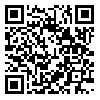BibTeX | RIS | EndNote | Medlars | ProCite | Reference Manager | RefWorks
Send citation to:
URL: http://hii.khu.ac.ir/article-1-2457-en.html
Background and Aim: The purpose of this study was to investigate the relationship between social capital and knowledge sharing at national information centers in Iran.
Method: This applied research was carried out using two questionnaires and a checklist. Data were collected from all the managers, but stratified random sample of staff members of three: main national information centers (National library, Regional Information Center of Science and Technology [RICEST], and Iranian Institute for Information Science and Technology).
Results: research findings indicated that: A) from managers point of view, lowest relationship between social capital and knowledge sharing belonged to the national library. But results gained from staff members credited the lowest situation to the RICEST; B) all of three information centers coined low range of knowledge sharing, therein, National Library with mean 2.17 out of 5 was the tallest among others; C) National Library was the highest among other centers regarding three dimensions (Relations, Trust and Shared norms) of social capital; D) Relationship between knowledge sharing and trust in all three institutes was significant But in Iranian Institute for Information science and Technology the relationship was more outstanding than others; and E) there was significant relationship between shared norms and knowledge sharing in all institutes.
Conclusion: In order for the National Information centers to improve the knowledge sharing culture among their staff members they should internalize mutual trust, provide them with shared norms and improve organizational communication
| Rights and permissions | |
 | This work is licensed under a Creative Commons Attribution-NonCommercial 4.0 International License. |






